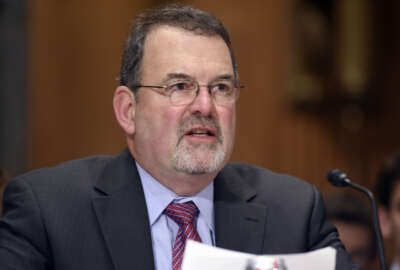As one of his last acts as federal chief information officer, Tony Scott and the CIO Council released the State of Federal IT report Jan. 19. A team of federal IT executives, with the help of two contractors, interviewed 45 federal CIOs and deputy CIOs, and chief information security officers and deputy CISOs as well as other federal IT leaders. The goal was to give the incoming Trump administration a status report on where the government has been and is today with technology, and 11 recommendations for the future.
The report is a fascinating read, both from a historical perspective and from the viewpoint of an administration that built on the work that came before it and took advantage of new technology opportunities to improve the government.
I’ve pulled some of what I think are the most interesting details from the 155-page report — which is well worth reading.
State of Federal IT by the Numbers
43 — The percentage of the more than 4,300 IT projects in 780 major IT investments costing $81.5 billion across the government listed on the Federal IT Dashboard as of September 2016 that were listed as over budget or behind schedule.
80,000 — The number of federal employees who hold the employment classification of “Information Technology Management.” “With the number of retirement-eligible federal employees increasing every day, new talent must be hired into the government in order to handle constantly evolving tools and technologies,” the report stated.
80 — The percentage of key performance indicators (KPIs) that do not appear more than once in agency PortfolioStat reviews. The report stated that this disconnection “has likely impacted the ability of agencies and OMB to benchmark progress in certain policy areas.”
0 — The number of agencies that as of September 2016 had fully implemented all 17 elements of the Federal IT Acquisition Reform Act (FITARA) common baseline. “OMB could improve follow-up on agency progress and plans by making the scores summarized in the FITARA Visual Toolkit publicly available, using the same public pressure and transparency that OMB harnessed with the Federal IT Dashboard,” the report stated. “While agencies devoted significant resources to preparing FITARA common baseline implementation plans and reporting information to OMB, they have not seen a strong continuing focus on follow-up and oversight of FITARA implementation. CIOs reported that continued OMB follow-up could help provide CIOs the necessary high-level cover to allow them to make progress on actions which depend on leaders outside of the CIO organization.”
34.7 — The amount in billions of dollars — 43 percent of all IT spending—that agencies planned on spending in fiscal 2016 on IT infrastructure, such as data centers, end user devices, cloud systems and other infrastructure. “CIOs across the government repeatedly cited aging infrastructure as a roadblock to innovation and as an obstacle to meeting expectations of citizens and agency employees. For example, as agency users access more bandwidth-intensive cloud-based services, aging agency network infrastructure can struggle to meet the demand,” the report stated.
8.1 — The amount in billions of dollars reportedly saved through the governmentwide data center consolidation effort. Still, the report stated spending on IT infrastructure remained consistent between 2010 (34.6 percent) and 2017 (34.3 percent).
15 — The target percentage for agencies to move infrastructure to cloud computing as part of the 2016 PortfolioStat review process. The report found no agency meets that goal.
185,000 — The number of datasets agencies published on Data.gov portal. The report stated, however, that “it can be difficult to measure the broader economic and civic impacts of open data and open government efforts.”
24 — The number of CyberStat reviews performed by OMB in 2016, up from eight in 2014. The CyberStat reviews currently assess two-to-four agencies per month, and include Homeland Security Department and National Security Council leaders as well as OMB officials. Reviews in 2016 focused on information security governance, strong authentication, and agency protections of high-valued assets (HVAs).
65 — The number of internet connections across civilian agencies as of 2015, which were reduced from thousands under the Trusted Internet Connections (TIC) initiative. “However, because TIC relies on a centralized access point (while cloud is based on a decentralized model), complying with both policies has created problems for agencies and industry alike. Given the growing importance of protecting federal data whether hosted in a cloud, a data center, or traversing the internet, OMB has launched an effort to align existing policies related to TIC and cloud service adoption,” the report stated.
82 — The percentage of IT projects larger than $2 million that do not have managers with Federal Acquisition Certification for Project or Program Managers.
0 — The number of people using Uncle Sam’s List, OMB’s attempt to create a centralized database of shared services. The report stated OMB pulled the plug on the effort in 2015 after continued rates of low adoption.
Return to the Reporter’s Notebook
Copyright
© 2024 Federal News Network. All rights reserved. This website is not intended for users located within the European Economic Area.

